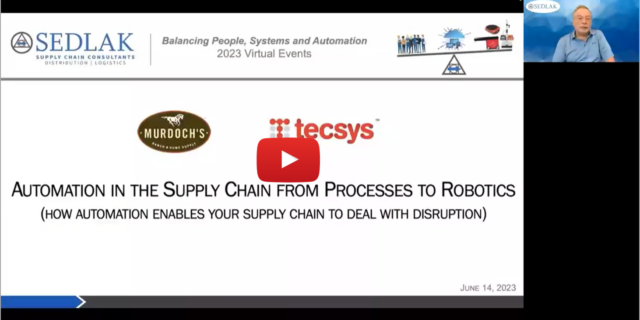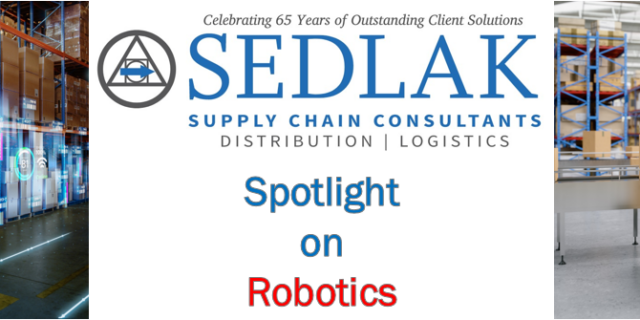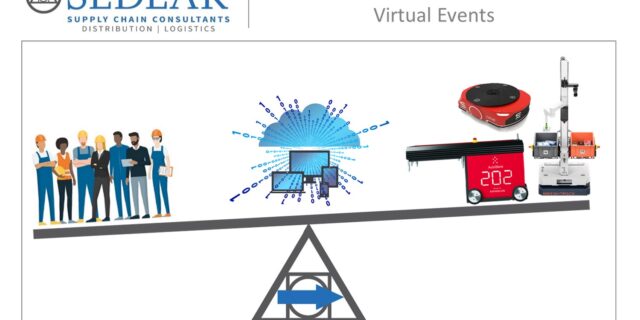Independent Logistics Consultants vs. Systems Integrators (Pt. 4)
February 14, 2014 By: Senior Management | Topics: Change Management, Facility & Operation Design, Project Support & ManagementPART 4: Focus on Level of Automation
For DC executives, using an independent logistics consultant versus a systems integrator is vital to the very set-up and running of an efficient and cost-effective distribution center. Three very critical factors differentiate the methodologies of independent logistics consultants from systems integrators: a) objectivity in system design; b) focus on the level of automation; and c) change management.
In our last post, we compared independent logistics consultants to systems integrators with regard to objectivity in system design. This time we examine the focus on automation.
Designing a DC from an automation focus delineates a significant difference in how systems integrators and independent logistics consultants approach distribution solutions.
Too many supply chain executives make the fundamental mistake of thinking that technology should be the basis and starting point of their distribution solution. Where, in fact, thorough conceptual design aimed at process improvement should be the central aspect of any solution, rather than focusing on the material handling equipment.
Given the massive influx of new technology information flooding the distribution market, it is no wonder why logistics executives jump first to technology as the solution to their throughput issues. They are influenced by what they see in other facilities, what they read and what they hear from equipment manufacturers.
But supply chain executives are also considerably influenced by systems integrators, who are key contributors in pushing automation as a first option. Systems integrators rely on equipment sales and implementation as a central focus of their solutions and revenue. These solutions are centered on their preferred technologies and based on limited conceptual designs revolving around these usually capital-intensive systems. Consequently, systems integrators’ solutions may not be the best fit or the most cost-efficient options for their clients’ needs.
Independent logistics consultants approach distribution center challenges from a completely different perspective, embracing process solutions as the key motivator rather than equipment. They are brought in to consult the DC’s logistics executives very early on in the initial stages of conceptual design. The analysis that they provide for supply chain executives revolves around precise process needs for the DC, from both a localized and multi-distribution center perspective.
Approaching system design from a process perspective does not necessitate the implementation of any specific automated technology, but leaves the door open to any options to achieve the objectives of the DC’s supply chain executives.
The first step of a full conceptual design is to define the distribution center’s needs and parameters. These determine volume requirements that drive DC size, capacity and velocity. A capital estimate is prepared for the recommended solutions from a material handling standpoint and/or a facility build-out perspective. These factors then drive storage solutions, mechanical conveying and sortation solutions, and pick systems down to the applications of the equipment. The labor content required is then factored. Finally, a complete return on investment analysis is prepared, comparing current operating procedure to the new, proposed operating structure.
A thorough conceptual design ensures that the right amount of technology will be implemented for current and future growth needs. Too much equipment is capital absorbing. Too little equipment will necessitate higher operating costs by increasing labor.
This level of analytics, however, is seldom performed by systems integrators, falling short in providing a fully complete conceptual design analysis prior to finalizing on a system design. Such analytics are best provided by independent logistics consultants that are equipped with the expertise and experience to achieve the full desired results.
Moving forward with certainty on a DC expansion plan requires employing the most sophisticated analytical tools in the industry to provide straight-forward, unbiased plans. A thorough conceptual design analysis must be in place before a DC’s executives even begin to look at material handling equipment selection.
We hope that you find the insights contained in this series helpful to your business. If there is any way we can be of assistance with your distribution or facility design needs, please feel free to contact us by filling out the form below..





